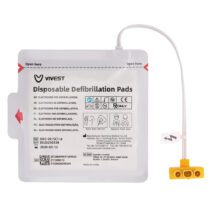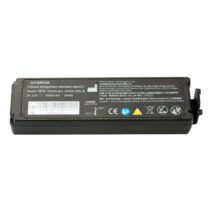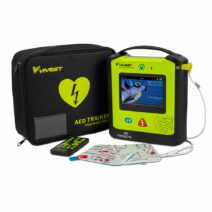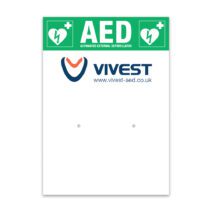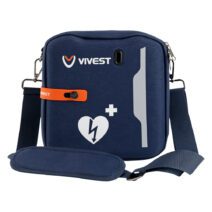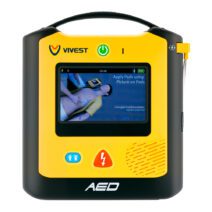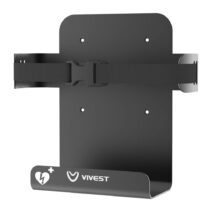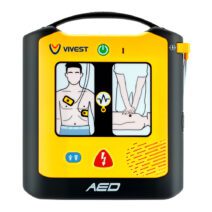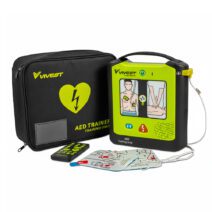News
The Importance of Knowing How to Perform CPR with a Defibrillator
Published 14/02/2024
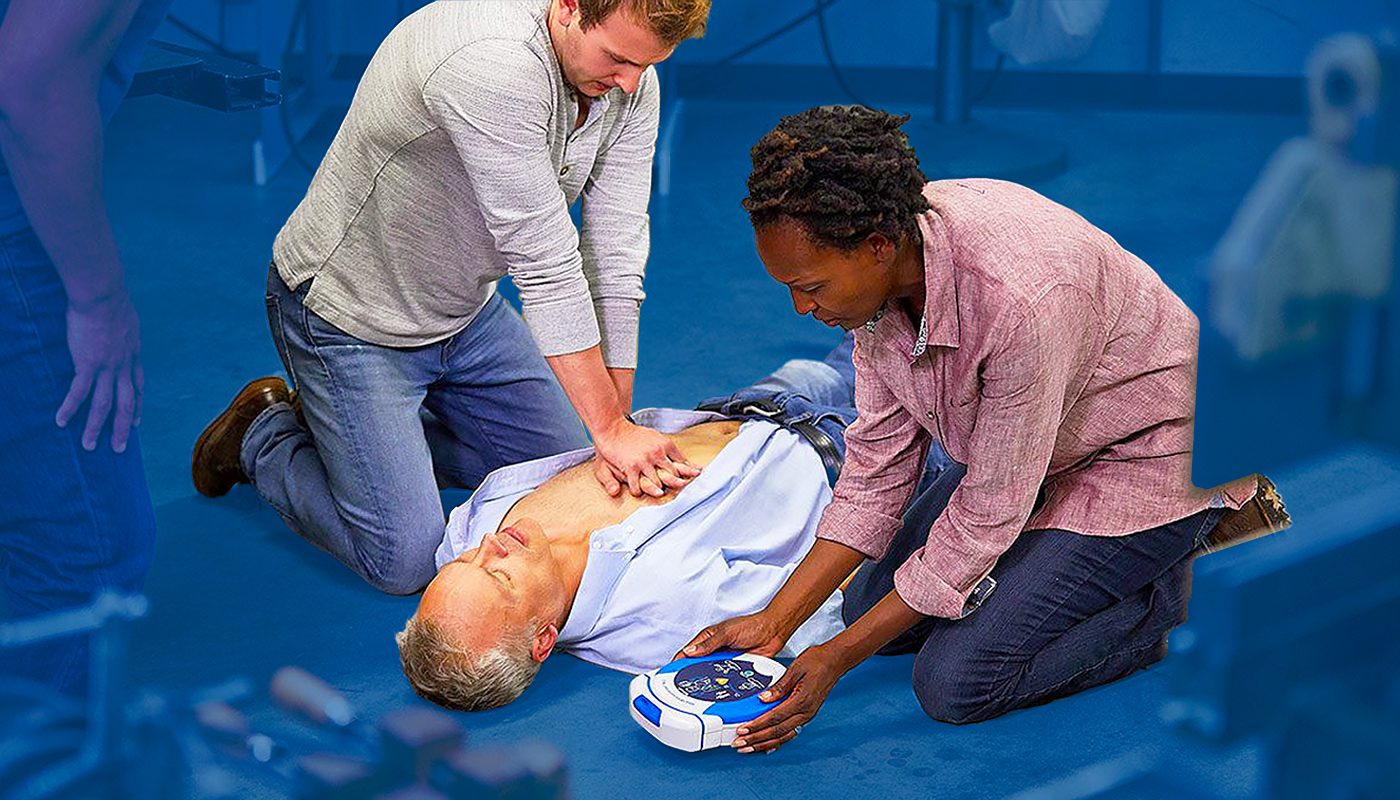
1) How do you recognise the symptoms between a Sudden Cardiac Arrest and a Heart Attack?
Here’s why they’re not the same:
A heart attack is a ‘plumbing’ problem that is caused by a blockage in the coronary arteries, restricting blood flow to the heart muscle. During a heart attack, the heart continues to pump blood, and the person typically remains conscious, responsive, and breathing. However, a heart attack can escalate to a cardiac arrest, especially if ventricular fibrillation occurs, increasing the urgency for immediate medical attention. Treatment may involve medication, cardiac catheterisation, or surgery to remove the blockage.
In contrast, a sudden cardiac arrest (SCA) is an ‘electrical’ malfunction of the heart, causing it to stop pumping blood to vital organs. If someone experiences a cardiac arrest, it is crucial to call 999, start cardiopulmonary resuscitation (CPR), and use a nearby defibrillator or Automated External Defibrillator (AED). Following instructions from the emergency operator is essential until emergency services arrive.
Initiating CPR and using a defibrillator promptly can help restore normal heart function. CPR is critical as it maintains blood and oxygen circulation to the brain and throughout the body. Public access defibrillators are commonly available in places such as train stations and shopping centres, and anyone can use them without prior training.

2) If it’s a Sudden Cardiac Arrest, here’s how to perform CPR with an AED to help keep that person alive
To perform CPR, Resuscitation Council UK recommends this step-by-step guide (click on each step below to reveal further advice). By acquiring the skills and confidence to follow this straightforward procedure, you could become a lifesaver in an emergency.
Before you approach the person who has collapsed to perform CPR on them, check your surroundings for danger:
Initially shout for help, then shout at the person who has collapsed and gently shake or firmly tap their shoulders to check for a response.
Look for the even rise and fall of their chest. You could put your ear or cheek close to the person’s face if you feel safe to do so.
Put the phone on loudspeaker and tell them you are with someone who is not breathing. The emergency call handler will talk you through how to perform CPR.
The emergency call handler will let you if there is an automated external defibrillator or AED nearby. Send someone to fetch it but don’t leave the person if you are on your own. You’ll now commence CPR.
Interlock your fingers. Place your hands on the centre of their chest. Push down hard and then release twice per second, and don’t stop unless:
(a) Someone else can take over
(b) You are exhausted
(c) The AED arrives
(d) The emergency call handler tells you to stop
The AED will tell you exactly what to do. Turn it on and attach the chest pads to the person in the positions shown. If the casualty is wearing a bra, it can be removed for the AED pads to deliver an effective shock. Listen carefully to its instructions. This device can give an electric shock to help restart the heart if it’s needed.
You should continue giving CPR until:
(a) The AED asks you to pause while it re-analyses and gives another shock if needed
(b) A paramedic arrives and tells you what to do
(c) The person now shows signs of life
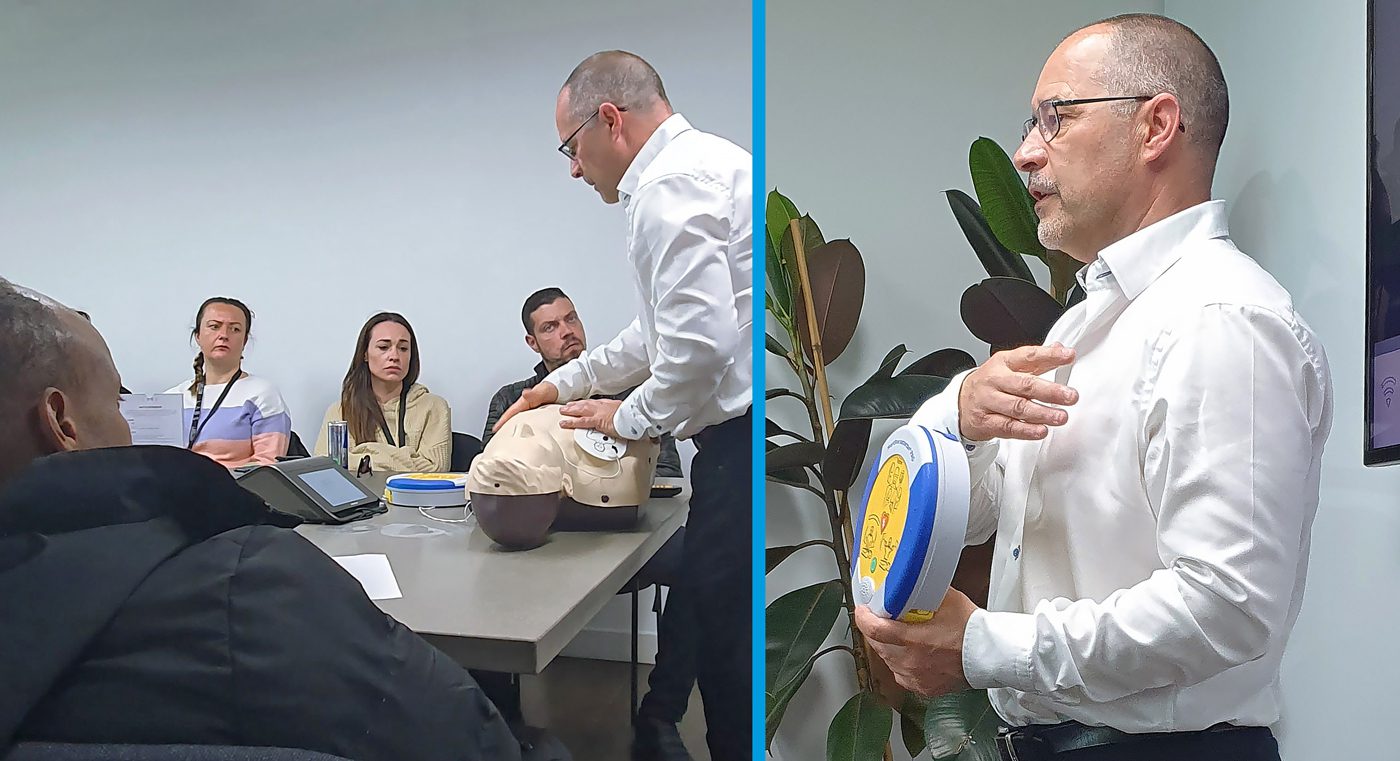
3) Aero Heathcare’s BLS/CPR & AED certificated training courses
We provide online and on-site training and familiarisation courses, equipping delegates with life-saving skills and knowledge. Our accredited courses prepare individuals for real-life emergencies, covering basic life support, CPR, and AED usage:
On-site familiarisation course allows for up to 12 delegates with a Certificate of Attendance upon completion. This provides confidence and competence, allowing any lay user to know what to do in a SCA incident.
(Duration: 60 minutes). £POA.
This online training course can conveniently be undertaken anytime, anywhere. It will empower users to learn basic life support (BLS), CPR, and how to confidently use a defibrillator (AED). Users simply access the course through a secure portal, with a Certificate of Attendance provided upon completion.
(Duration: 3 hours). £POA.
This on-site training course, taught by an accredited instructor, allowing up to 12 delegates to learn basic life support (BLS), CPR, and how to confidently use a defibrillator (AED). A Certificate of Attendance is awarded upon completion.
(Duration: 4 hours). £POA.
Consult our AED Specialists about Training Courses and/or AED purchase requirements
Contact the Aero team and a representative will support you with your training course enquiry and / or purchasing an AED solution. We look forward to hearing from you.
Featured products
Share this article

